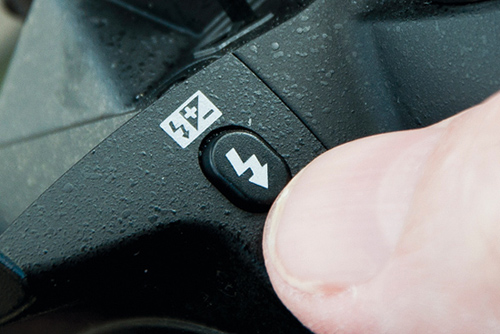Small Tricks To Make Your Photography Stand Out
Since as digital camera making giants are slashing their prices as a part of their plan to be competitive in the global scale, it has become quite common for people like you and me to own a high definition camera. However, I have nothing against the idea of owning two or more camera. However, the thing is when you are at it, you might encounter some situations that can make your aspirations for becoming a hotshot photographer a bit tough. So, here I am going to give you some tips that can help you tame the camera when it starts misbehaving with you.
EV Compensation
Most of us use to shot in the automatic mode because it saves us from the hassle of manually adjusting things whenever we are taking a snap. It is a good thing but sometimes, it can cause some troubles. Auto mode is great for maintaining proper exposure of the image but in some certain cases, you need to intervene to stop the images from appearing too dark or too light.
 |
| Image Source |
Imagine a situation that you are taking photograph of a snowy mountain. Now, if camera mode is set as default, the quality of the image may go haywire. The blissfully beautiful snow will appear gray and the subjects' surroundings will appear a bit darkened. You need not have to reinvest the wheel; all you got to do is to make some changes in the EV compensation. It is often represented as – a+/-. Just up the a+ and your life will be just fine.
You can face similar problem when you are shooting something, which is featured against a strong background. The background will have an overpowering effect on the subject that you are concentrating on. By activating the camera's flash, you will be able to bring the focus on the subject. But remember that you need to do some experiments with the distance and you will have the perfect shot.
Setting of Flash
When you taking photographs of people in dark, the flash of the camera may make the photos appear like washed out. Since the flash is going to illuminate the object artificially, the background may appear dark and the whole photograph may look a bit murky. To fix this, you need to use some diffuser effects like - Gary Fong Puffer that will help you a lot to soften and spread the light emanating from the camera flash. However, if you are lucky enough to have Flash Compensation setting in your camera, you are just fine. Just tone down a bit and you will have natural looking photos.
Close-up Images
 |
| Image Credit: Flickr |
Though majority of HD camera available in the market are great for close-up shots, you need to check that the Macro focusing is enabled because it is not the default setting of the camera. Try to find a button with flower icon on your camera to enable this enable this function. Now, if no such button exist on your camera, you should be better off with a new macro lens that will solve all your troubles. Though there are hundreds of thousands of accessories available to make small images prominent as a newbie, you will be just fine with a macro lens.
Blur Pictures
 |
| Image Source |
Now there are two scientific reasons behind blurry pictures; either the shutter speed is pathetically slow or the photo is out of focus. To fix motion blur, you need to do a small trick. Just increase your camera’s sensitivity to light, which will help it capture a photo in shorter period of time that will eventually reduce the motion-blurring thing.
The standard shutter speed is around 1/125-second and it is good enough for most cases. However, you can increase the speed to as high as 1/500 if you are into wildlife photography where there is very little scope of getting the right posture. However, if you are still not satisfied with the quality of the photographs, you are always free to use the Flash.
What About My Fingerprints
I know you never like the idea of smudging the lens with your fingers, but it might still happen. Though I know that fingerprints are not good enough to wreak havoc with the image quality, still you I feel that you will hate the idea of the oils of your skin is getting mixed with the sensitive elements of the lens that protect it from outward influences. But for Christ’s sake do not use any towel or napkin for cleaning up the mess.
Try to keep a microfiber cloth with you always since it has been designed for this. Disposable lens wipes are good for the same but just make sure that these coats are good and do not harm the anti-reflective coating in anyway.
Dark Spots
Sometimes, you may see some dark spots appearing on the photos. Don’t panic. It is nothing that serious. The probable reason could be that the image sensor has gathered some dust. Thankfully, majority of cameras have a cool featured named sensor cleaning but if your camera has no such privilege, you need to drive down a nearby repair shop to get it clean. There is no other way out.
Photos Got Deleted By Accident
Do not get disheartened if you have deleted the photos by accidents. Even if you have formatted the SD card, it does not mean that the images are gone forever and there is no way to get them back. Nope, thanks to the availability of special memory card recovery software, you will never lose any more images. CardRecovery is a great software to start with.
Dropped it on water
This is one such case that can unnerve even a seasoned photographer. Do a thing. First turn the camera off immediately and then take out the batteries. Take it back to home and place it in a container full of uncooked rice. Do not be surprised because rice is going to act as a desiccant and it will soak the moisture out of it and you have the Lady Luck with you, everything will be fine in just 48 hours.
Don't panic.
Turn the camera off and remove its battery immediately. Don't try and turn it back on. Take it home, put it in a plastic container full of uncooked rice and walk away for a couple of days. The rice will act as a desiccant, drawing moisture away from your wet camera. If you're lucky, all will be fine after 48 hours - if not, it's time to find a repair shop or a new camera.
Turn the camera off and remove its battery immediately. Don't try and turn it back on. Take it home, put it in a plastic container full of uncooked rice and walk away for a couple of days. The rice will act as a desiccant, drawing moisture away from your wet camera. If you're lucky, all will be fine after 48 hours - if not, it's time to find a repair shop or a new camera.
About The Guest Author:
Michael Evans is a passionate blogger and he loves solving the problems of small business organizations. He is associated with Site2You.com that teaches people how to create a website.
Michael Evans is a passionate blogger and he loves solving the problems of small business organizations. He is associated with Site2You.com that teaches people how to create a website.
This post was contributed by one of our guest authors. If you would like to contribute for our blog, you can contact us.













